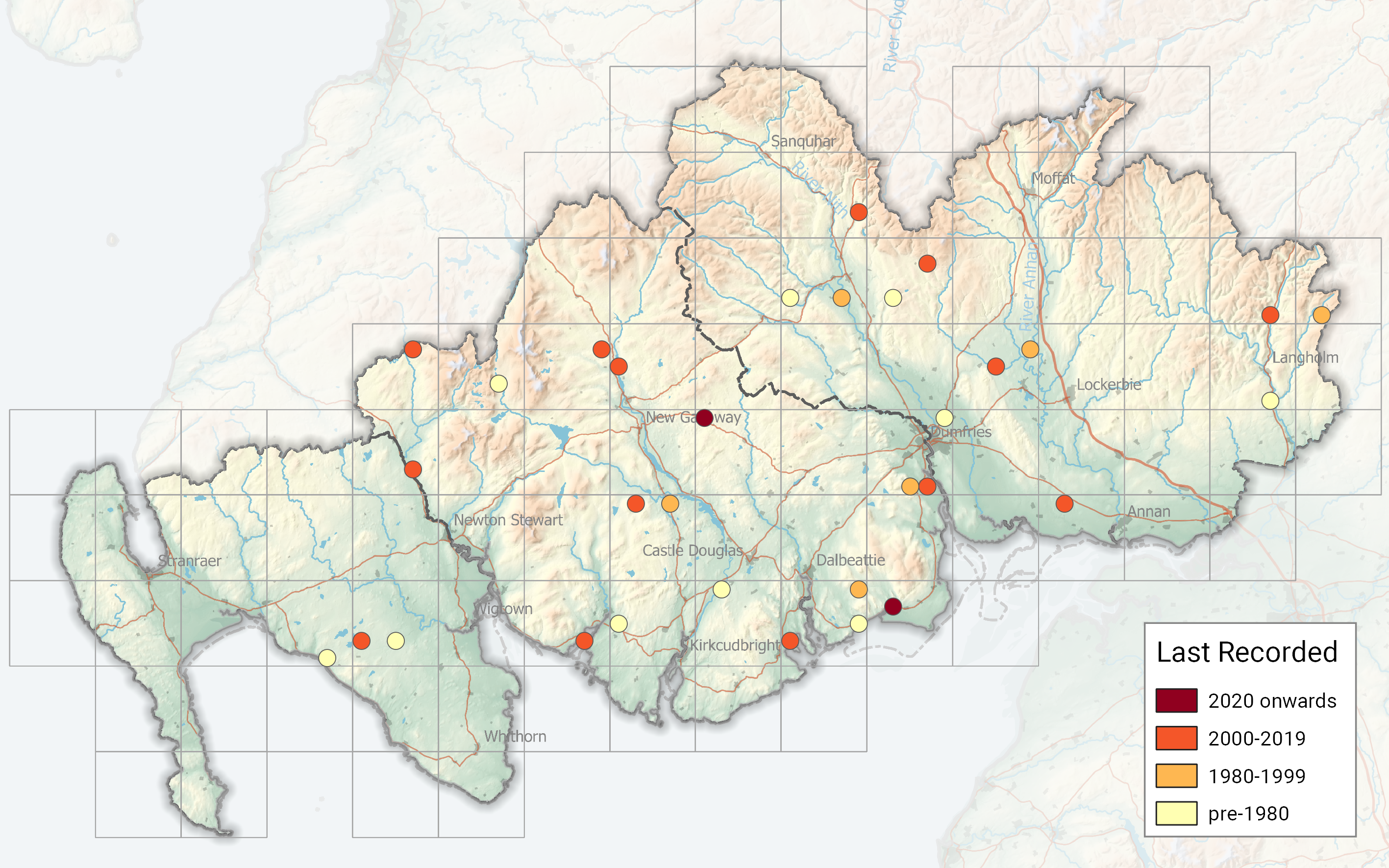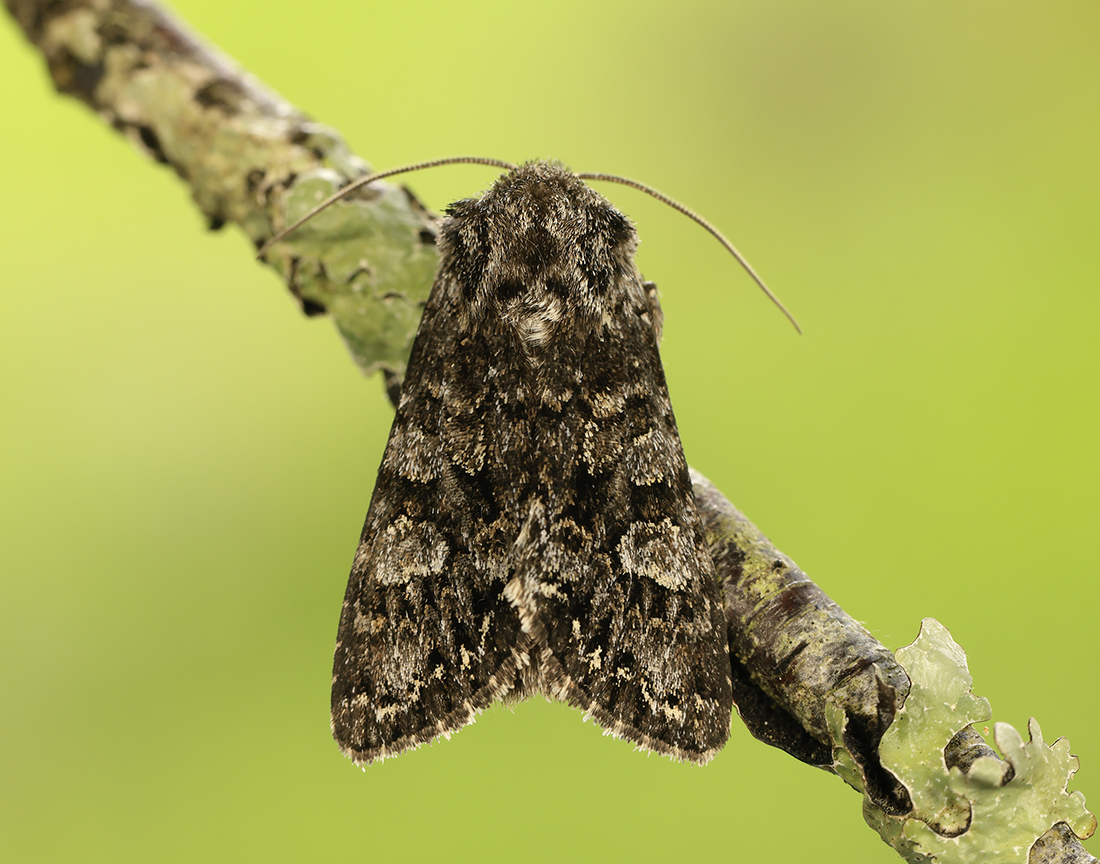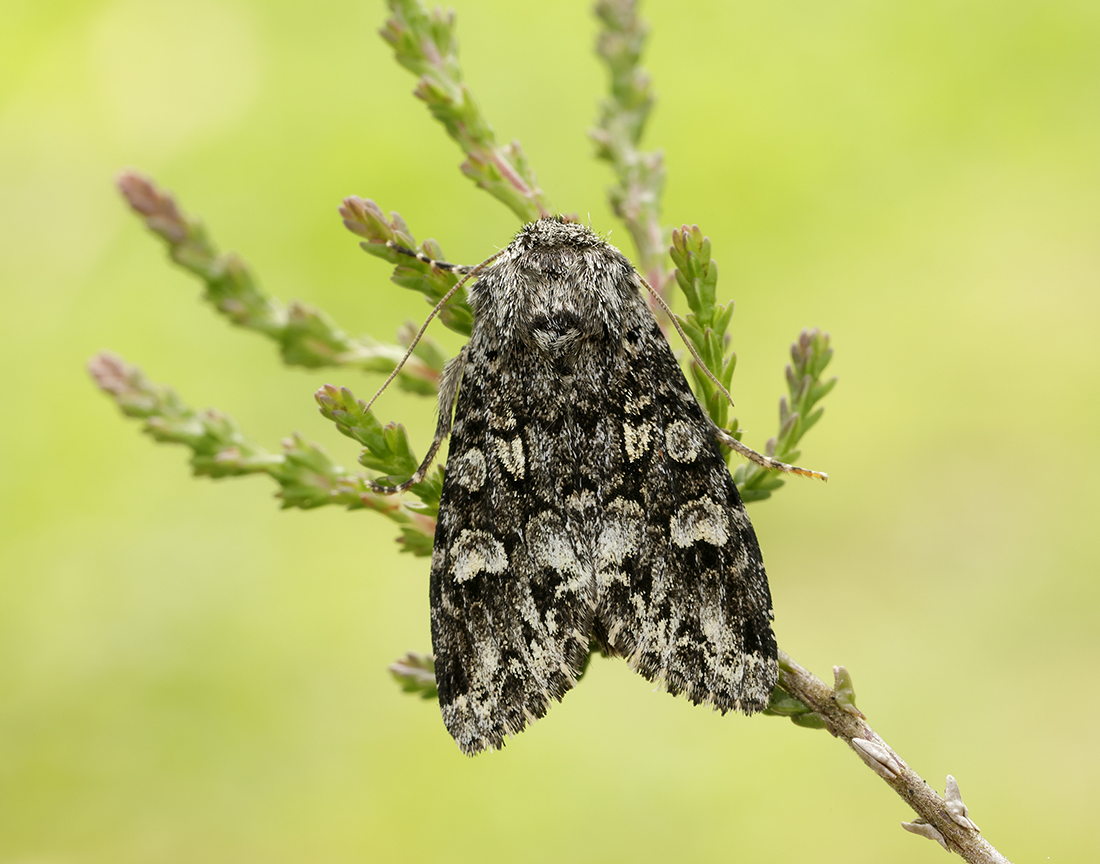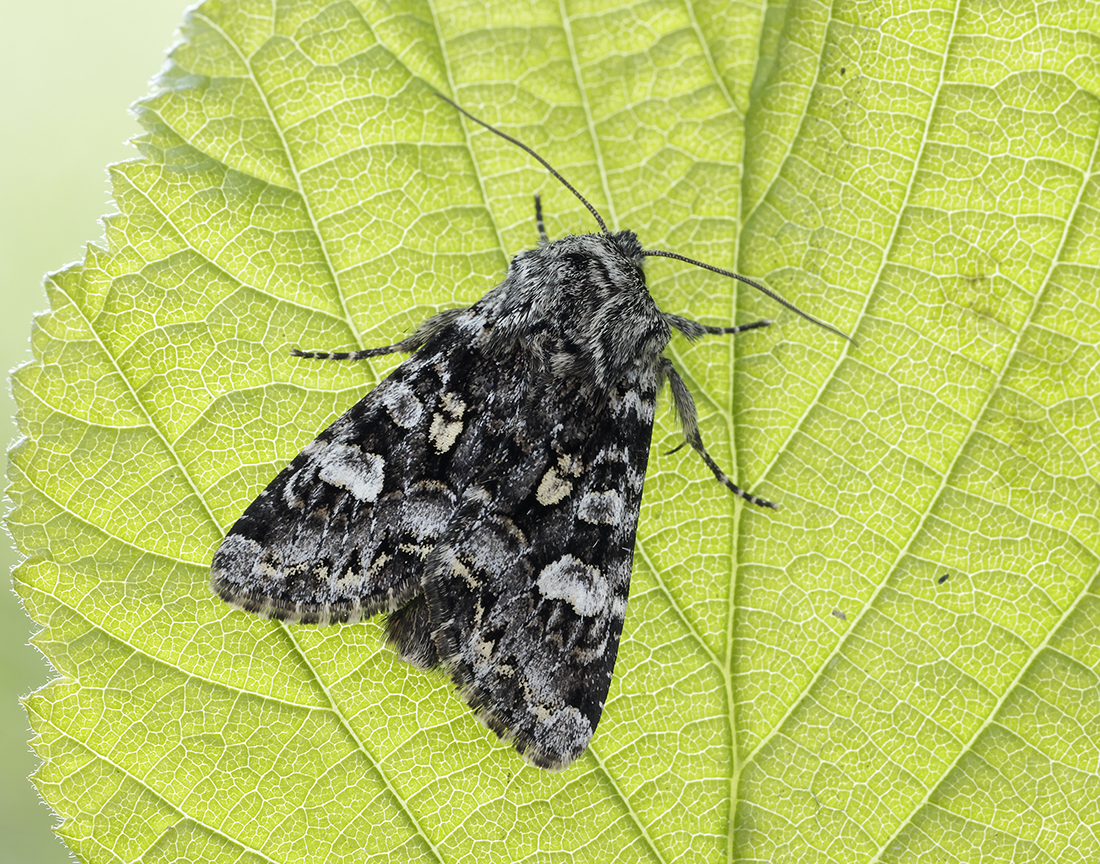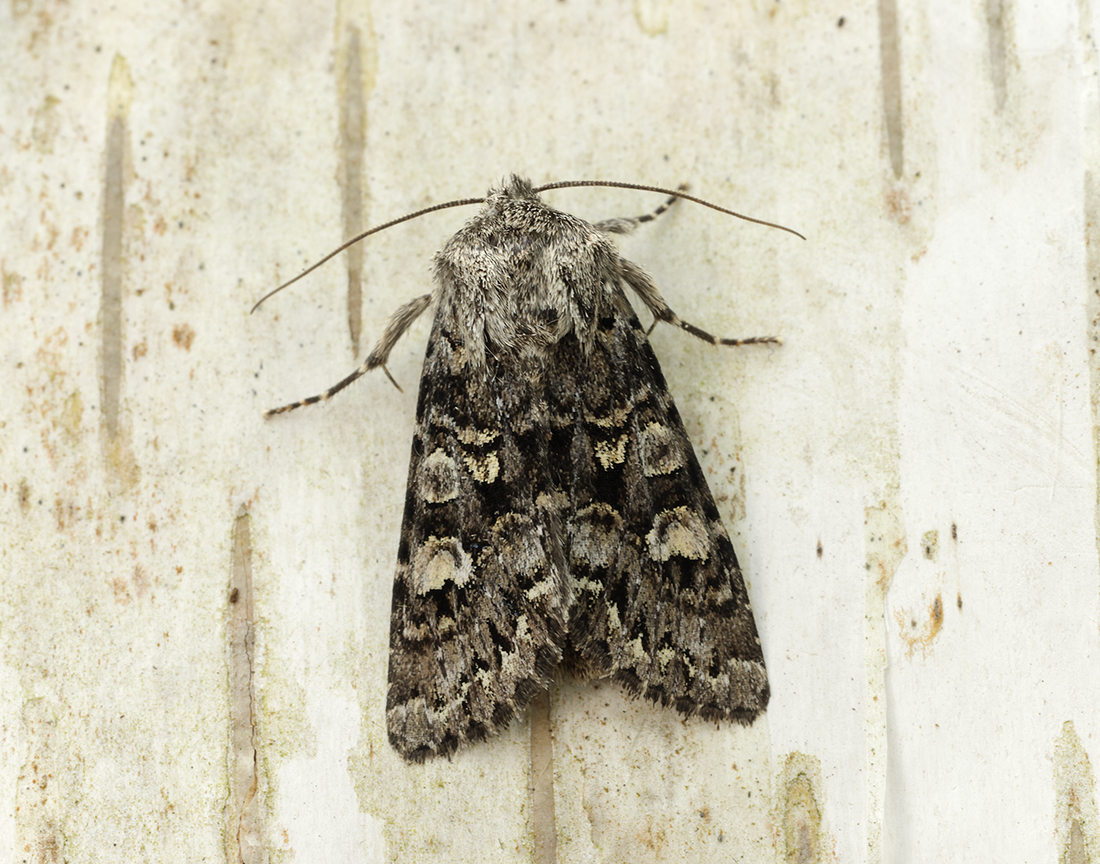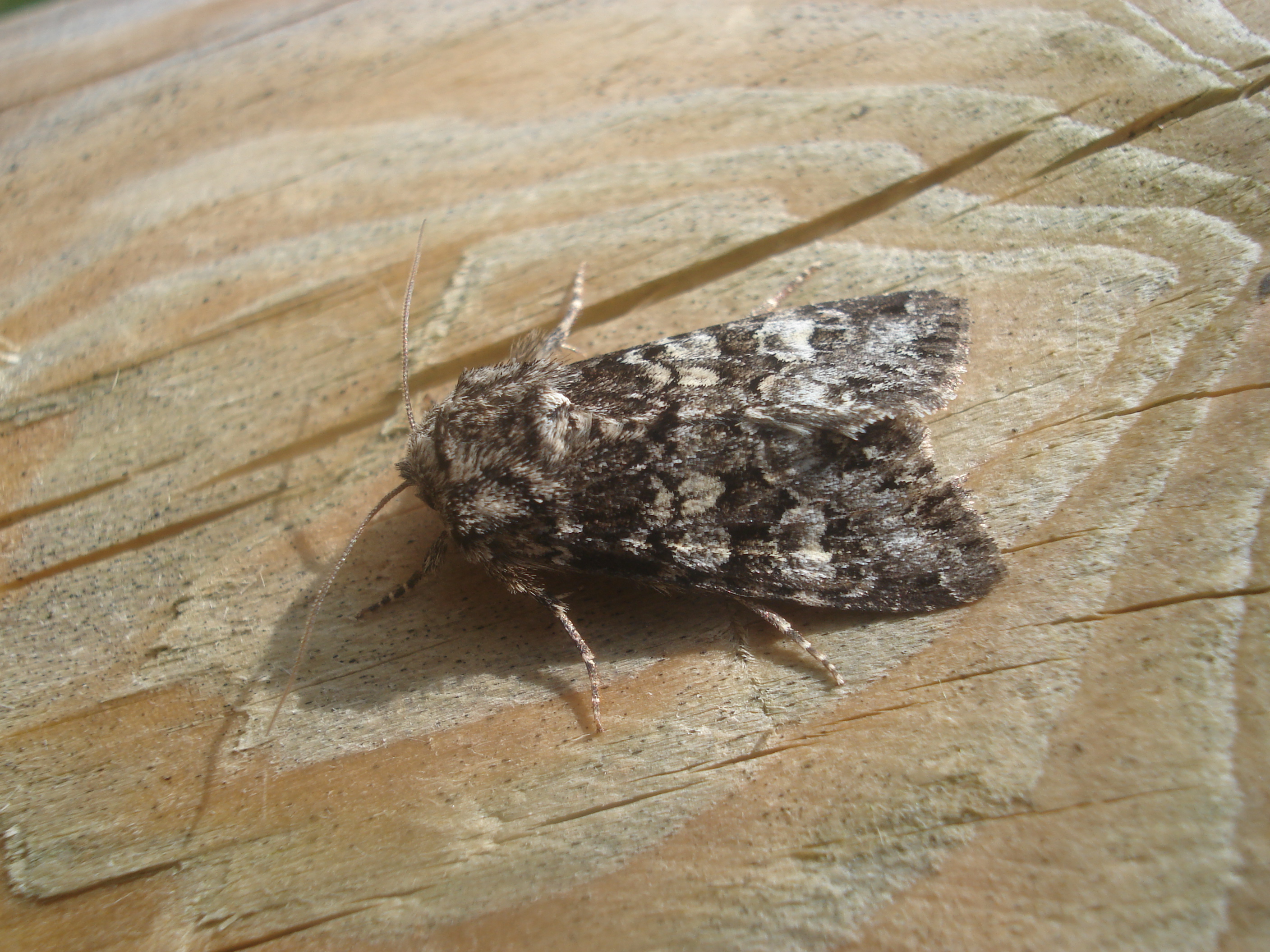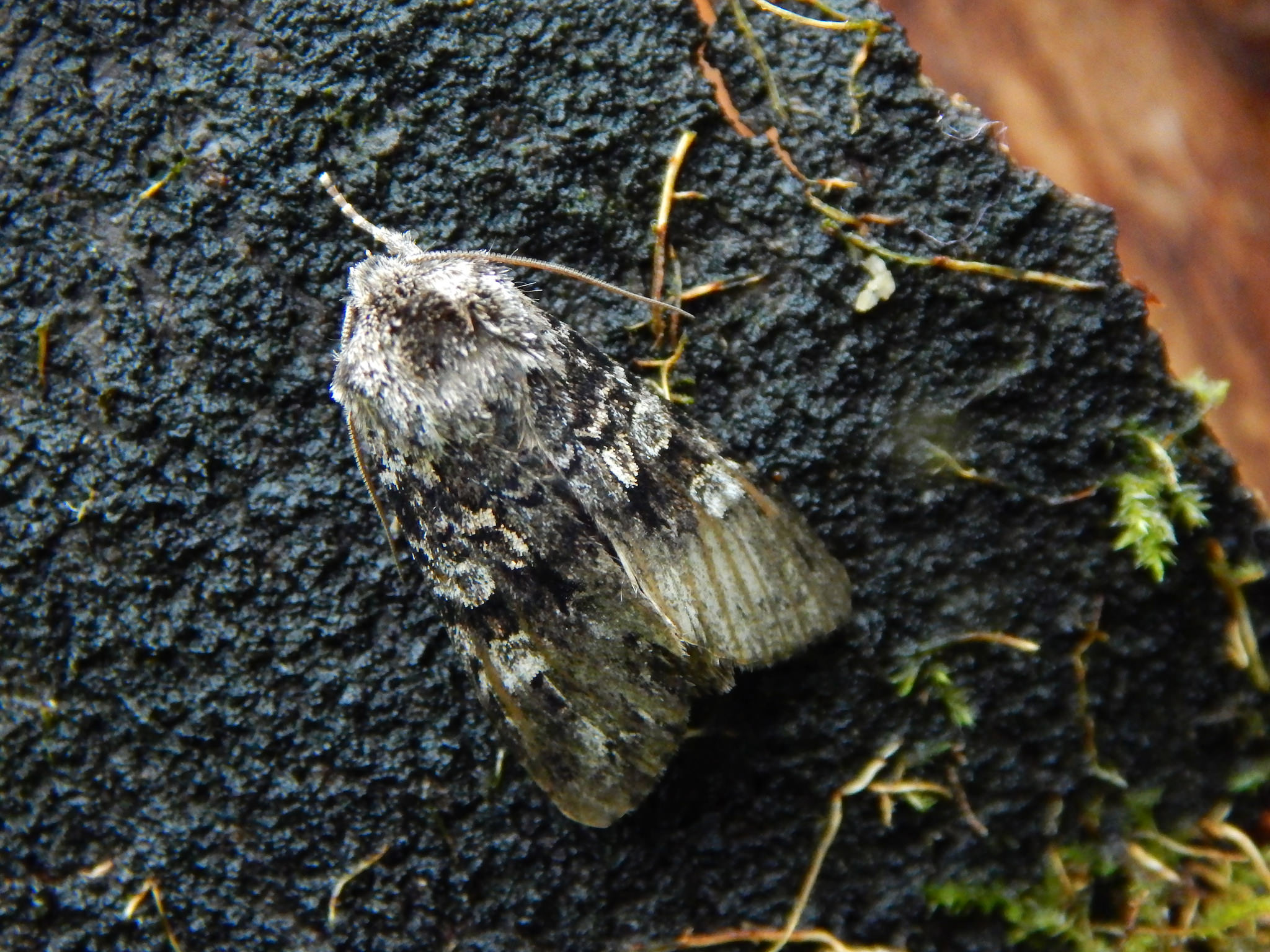Identification
The dark-edged, pale tooth-like mark in the centre of the forewing should aid identification.
Recording Method.
Attracted to light, also comes to flowers.
Life cycle
One generation. Overwinters as a pupa underground. Larvae present June to August, feeding mainly at night.
Larval foodplants
A wide variety of woody and herbaceous plants including Heather (Calluna), Bog-myrtle, Meadowsweet, Bilberry and sallows.
Habitat
Mainly moorland.
History
Gordon (1913) had found it not uncommon on moor sallows in May. A few were attracted to sugared posts on the moor at Corsemalzie, while another came to light at Corsemalzie on 22nd May 1911. One was found on sea pinks at Garheugh on the Luce Bay Bay on 11th June 1906. Earliest date was 9th May 1911. Sir Arthur Duncan (1909-84) during his lifetime had found it at Closeburn and Tynron (VC72).
During 1974 there were a series of records from Irvine House Lodge, Auchenrivock (VC72), followed by single records in 1977 at Gatehouse of Fleet and Bridge of Dee (VC73), in 1982 at Waterside Mains at Keir (VC72), with three further records, two in 1990 and a single in 1992 at Mabie Forest; these were the only RIS data. During 1982 it was recorded regularly on the Hensol Estate. From 1991 to 2010 there were a further twelve records from widely scattered sites across the region.

